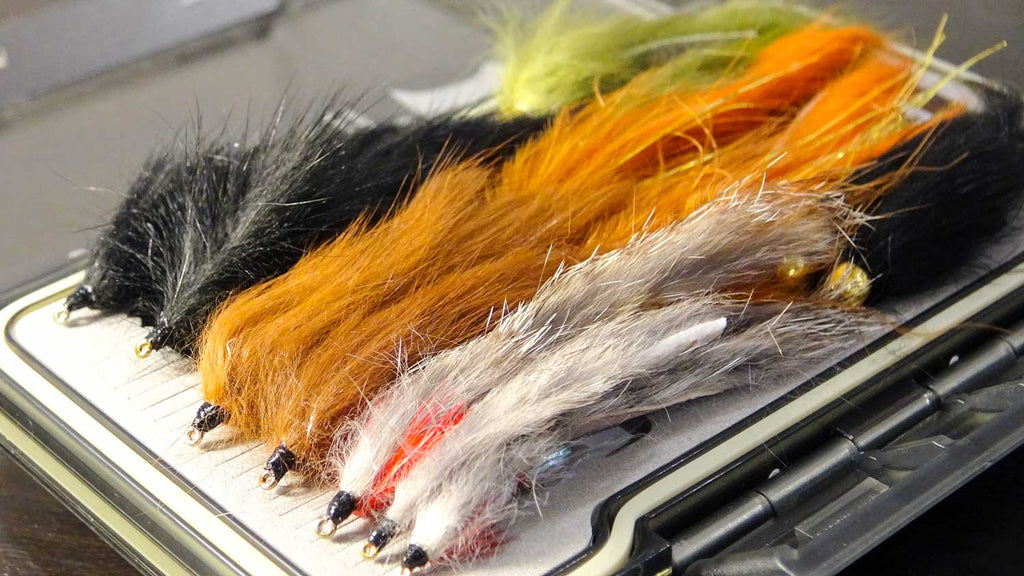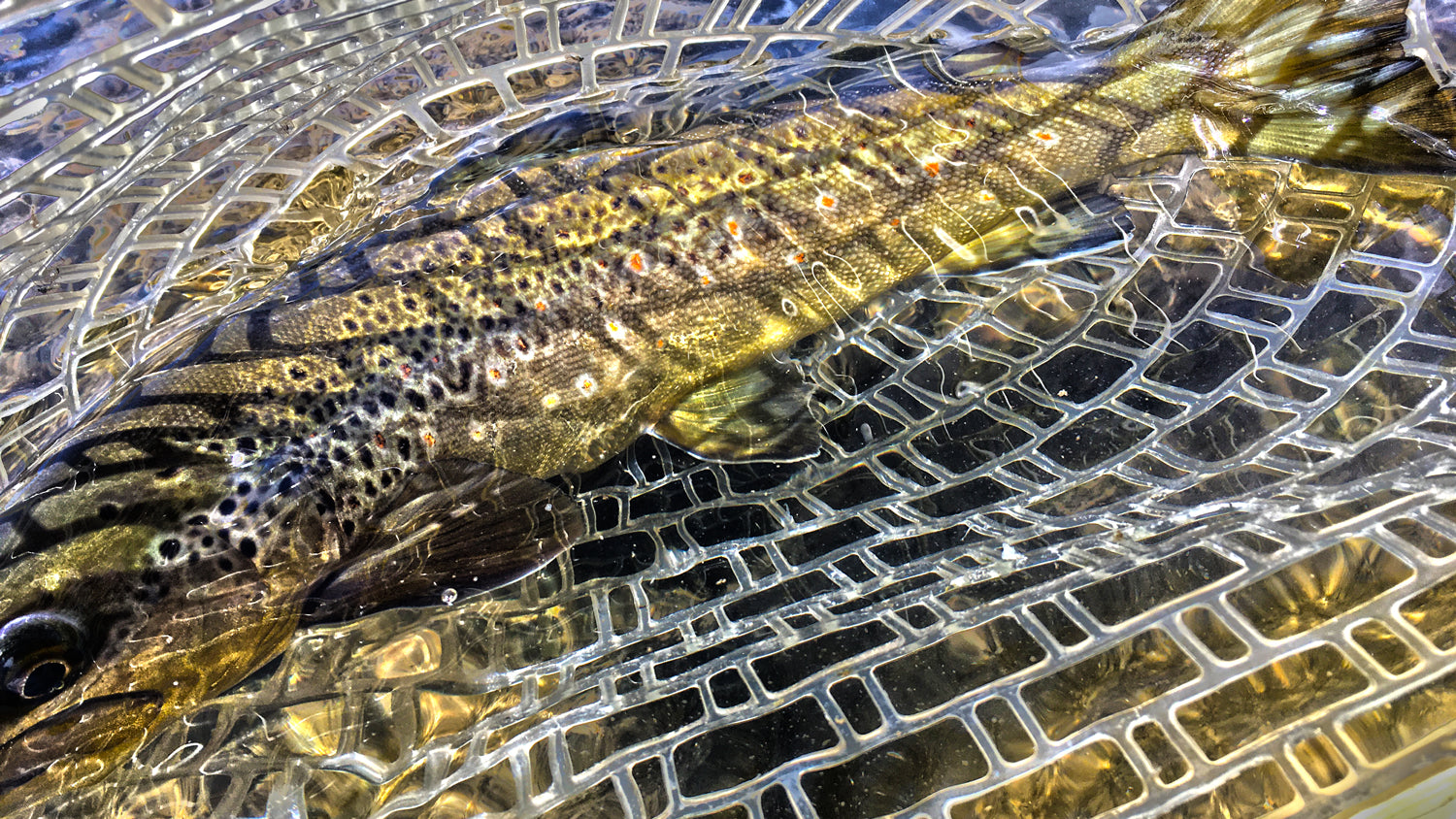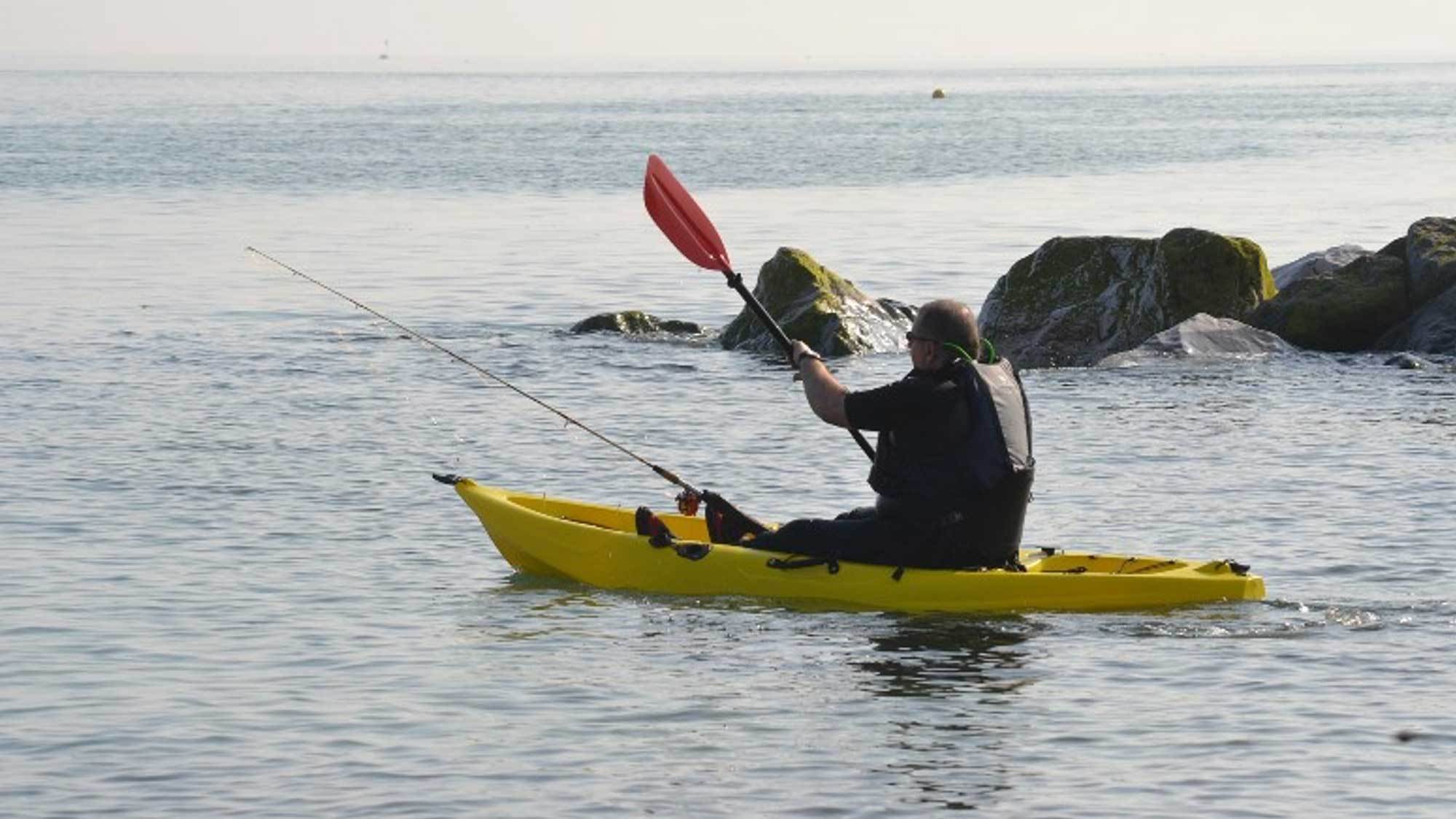Sculpins, sometimes referred to as bullheads or scorpionfish, are smaller fish residing in salt and freshwater. They are a favorite lure of fly fishermen everywhere, not only because they attract large fish, such as the highly-desired trout. While considered small, sculpins can range on the larger side (6 or 7 inches long or so) and, for that reason, are one of the most significant sources of food for larger trout. As in, the big trout - the MONSTER trout.

This is why so many fly fishing enthusiasts like to use these baitfish in fly fishing. Sculpin fishing is so popular among fly fishermen that there are entire techniques dedicated to catching trout in this way.
Let’s learn a little about the sculpin, as its always a good rule of thumb to know about the fish you’re using as bait, to help you better understand the trout that are feeding on it:
Sculpins are a reasonably small, bottom-feeding fish that live in both freshwater and saltwater. They are benthic fish, meaning they largely dwell on the bottom of rivers, lakes, and oceans, though they do occasionally come up to the surface. They're scavengers of a kind, hanging around the bottom and darting over occasionally to rocks to pick up food - they mainly eat insect larvae, but they also feast on crustaceans, smaller fish (including their own kind; sculpin fish are cannibalistic), eggs, shrimp, and more. In turn, they are eaten by many different types of trout, including brook trout, brown trout, and other fish such as pike and big mouth bass.
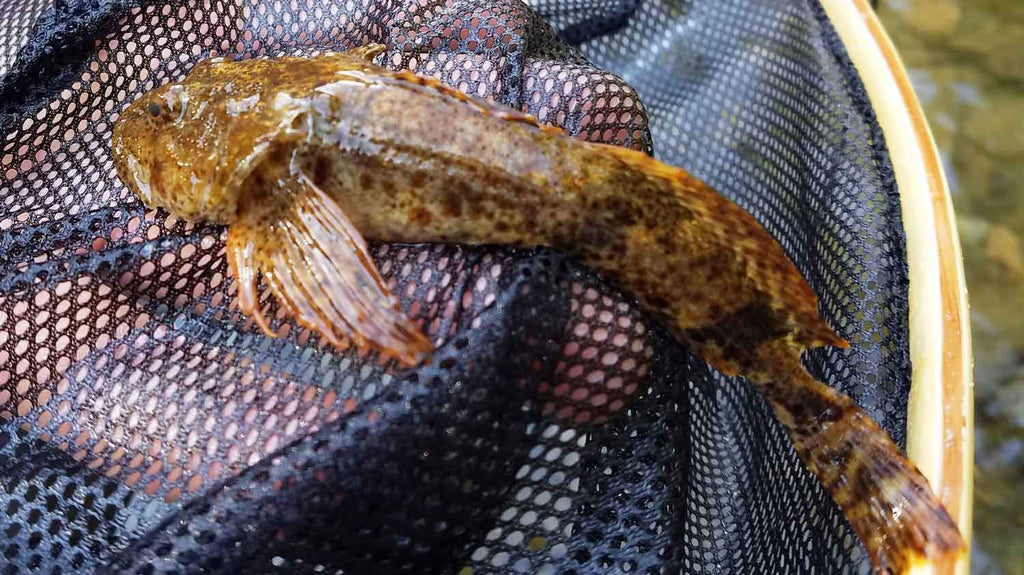
These fish lie in wait for the sculpin, often attacking their prey as they move to escape. Sculpins are an excellent nutritional source for trout and other fish and reasonably easy prey for them to catch. This makes them a great option for baitfish.
There are eleven different families of sculpin, including both fresh and saltwater varieties. These fish prefer clear, unpolluted water that is mainly free of dirt and gravel, and this is why you're more likely to find them in deep, clear river water rather than in streams or creeks.
Their water must be highly oxygenated. Because of their unique physiology, this fish is fast-darting and can swim downward rapidly, but cannot move fast when drifting upward. They are also somewhat clumsy swimmers when out of their element.
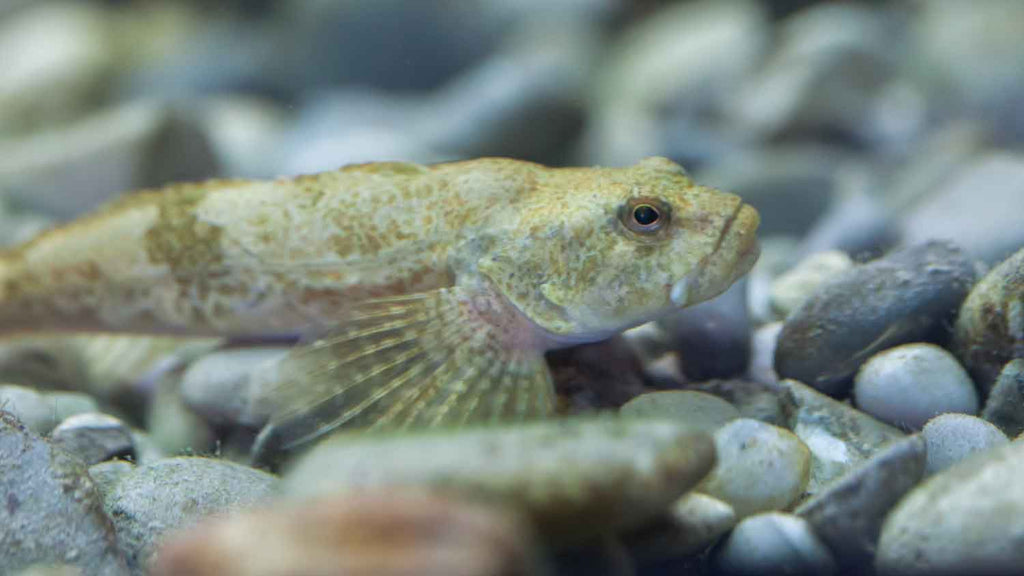
Fly fishermen have found that fishing using bait that mimics this colorful and uniquely aesthetic fish gets good results in catching large trout, especially from clear-water river areas. A wide variety of steamers mimic all different types and families of sculpin fish in a variety of colors, sizes, and styles. The technique to sculpin fly fishing is reasonably easy to pick up and relies reasonably heavily on tuition and proper fishing conditions.
Fly fishing is a beautiful and rewarding pastime with a whole host of benefits, and the sculpin pattern is one of the most beloved of fly fishermen everywhere. Learning to fish with this pattern is a great way to catch tons of trout while learning a cool and fun new technique that will keep you interested for years to come.
If you're interested in learning the proper technique for fly fishing with a sculpin pattern, you've come to the right place. Below, we've laid out a step by step guide for the beginner with a few variations and adaptations. Your results may vary, so use your gut instinct when necessary. This is just a basic guideline to get you started. If you follow this technique, you'll be catching monster trout in no time at all.
Location for Fly Fishing a Sculpin Pattern
It is a common misconception that Sculpin and Trout share the same habitat. The truth is that sculpin, primarily bottom feeders, are fast-moving fish that make impulsive decisions and often get stuck in areas where they don't belong. Because they aren't great swimmers against a current, they get stuck and exposed. That's when trout come looking for them; in fact, trout have been known to lie in wait for this exact scenario.
Since sculpins are plentiful in rivers, many avid fly fishermen prefer to go there to fly fish; after all, where the sculpin are prevalent, so will be the trout. You can also try your luck at creeks and streams, but most avid fly fishermen swear by plentiful rivers, preferably in a secluded spot where you have your litter's pick. You don't want to fish in highly congested areas.
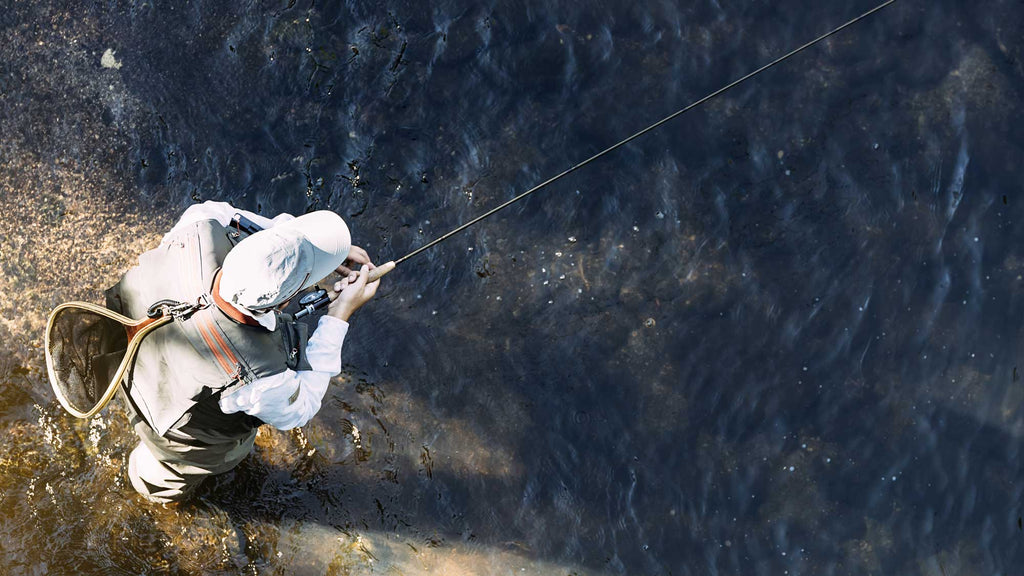
Sculpin also exists in saltwater, and you can try your hand at streamer fishing out on the open sea, though it's a more rare practice that isn't guaranteed to catch tons of sea trout, as the best bait for sea trout is good old fashioned shrimp! That doesn't mean you can't give it a shot, though! New techniques and methods are created and perfected every day.
Fly fishing/sculpin fishing can be done in various mediums, including from a boat out on the open water, from the shores of a river, or by wading into a deep hole where you know the trout are biting.
If you want to catch sculpin as a beginner right from the get-go, trying this technique at a plentiful river is probably your best bet! Sculpins prefer clear water (meaning free of any debris, dirt, or tiny rocks that clog up the water), and therefore hang out in these areas of deep, clear river water, with a current or without. That's where the trout are going to be, too.
You can certainly try your hand at fly fishing with a streamer in a creek, stream, or lake, but you'll see the best results in clear, deep water. Rocks are fine, preferable even, so long as the water isn't muddy or full of debris. The same goes for wading holes; if the water is clear, you're probably going to do fine. Avoid muddy, unclear, and dirty areas.
Equipment to Use Fly Fishing a Sculpin Pattern
There are quite a few infamous (well, among fly fishermen anyway) sculpin streamer patterns out there with various funny and interesting names. Most fishermen have their favorite, choosing from the Muddler Minnow, Sculpzilla, Drunk and Disorderly, and so on. While these are fun to say and fun to fish with, too, it isn't totally necessary to have dozens of popular or custom streamer patterns to successfully sculpin fish.
A few tried and true streamers can work a treat if you are using proper technique. This is by no means an exhaustive list, but here are a few of the more popular and well-known streamer styles:
- Muddler Minnow
- Drunk and Disorderly (and Mini Drunk and Disorderly)
- Tungsten Jig Bugger
- Sculpzilla
- Green Olive
- Lynch’s Double D Streamer
- Woolly Bugger
- Jawbreaker
- Krafts Crawdad
- Heifer Groomer
- Heavy Metal Sculpin
- Rainey’s Rootbeer Grim Reaper
- Rainey’s Barely Legal
- Circus Peanut
- Hale Bopp Leach
- Beadhead Krystal Bugger
These are just a few of the many, many streamers out there. Many fishing enthusiast websites and magazines feature different ones for every season, and avid streamer fishermen collect many of them.
However, to reiterate, you don't need to spend tons of money on streamers to fly fish with a sculpin pattern effectively. You can, but you don’t have to.
Using sculpin as bait means that you do need colorful and fancy patterns that look like sculpin fish, though. There are tons on the market, and many fly fishermen are fond of making their own. Just remember: you don't need to spend a ton of money on these patterns and don't get so caught up making them that you become attached. These are meant to catch trout, and they aren't a piece of artwork! Many fly fishermen have great success with just basic sculpin fishing materials, and you will too.
As with most fly fishing, you don't need a ton of fancy or expensive equipment to catch fish; you need a few key things. An essential drifthook/streamer surge fly fishing kit should do the trick, along with your essential flies and so on. These fishing kits usually come with upwards of twenty hand-tied, colorful streamer patterns to get you started.
For the best fishing kit for you, do your homework and shop around a little. There are some great (and affordable) ones online and your favorite athletic and retail shops. There's no harm in taking your time to read some reviews and see what has worked well for other fishermen, and don't be afraid to get advice from the clerk or shop person if you're curious. That's what they are there for.
The lines you use and materials, etc. depending on the areas in which you're fishing (deep waters, currents, etc.). Hooks, weights, ties, and more depending on the pattern you're using and where you're fishing.
Techniques to Use Fly Fishing Sculpin Patterns
Depending on your sculpin pattern, you can fish on a floating or sinking tip-line.
You want your sculpin to mimic the movements and fishing style of an actual small sculpin fish. To do so, make sure to use dull flies and sort of dart them around, keeping them furtively moving near rocks, undercover, and around the river bottom. Most experts say that if you lose one or two over the course of fishing, that's an indicator that trout are biting, and you're doing it correctly.
Sculpins are bottom feeders, so settling your fly on the river's bottom is your best bet. You want to mimic the fish's feeding and swimming style, tipping it upwards when drifting and darting downward in a quick motion when heading towards the bottom.
Many fly fishermen enjoy sculpin fishing in a down-and-across method, but for our money, casting upstream has a higher rate of success.
When a Sculpin is spooked it will swim downriver. So to mimic this reaction, casting up-and-across allows the fly to settle and move more authentically than down-and-across, causing the fly to whiz past the fish and startle them into taking the bait.
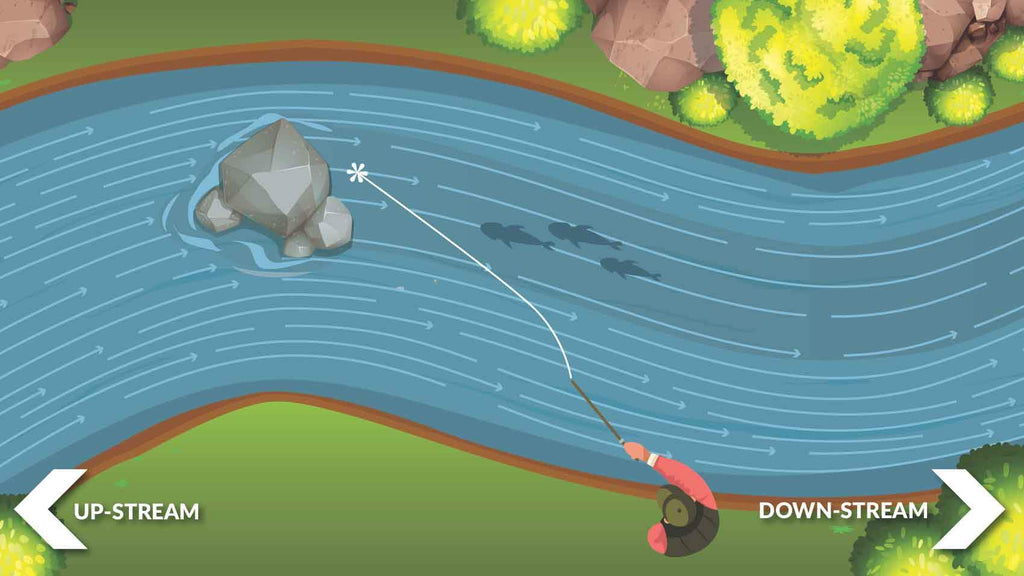
Casting & Retrieve Techniques for Fly Fishing Sculpin Patterns
- Wet/soak the sculpin steamer to get it assimilated to the water, so it moves quickly and sinks fast once you cast;
- Cast straight upstream or up and across the current
- Point the Rod Tip in the water
- As soon as the line hits the water start fast 12 to 18-inch retrieves
- As the line swings past, swing the rod downstream;
- Start darting the line back and forth around rocks and so on.
A good rule of thumb is to keep the line in the water at all times. This allows for maximum contact with the fly. Any time you feel it slacking, strip in additional slack or dart it around a little more to attract the fish.
If you do want to try a down-and-across method, go for it. You may have some success; it's the preferred method for many fly fishermen. Just follow the same basic guidelines and keep the line in the water for a prolonged period after casting, as mentioned above.
Letting the line hang out there for a while is fine, but occasionally, you may want to "create" a scenario that will trigger the trout's predator impulse. You can do this by letting the line soak and hang out for a bit, then create a sudden, frantic darting movement to mimic an escape; the trout won't be able to resist. This is a very intuitive method that will take a lot of practice and rely on your experience and intuition as a fisherman. Don't be discouraged if it takes a little time to get the knack.
If you want to mimic the fish, try the darting and "escape" techniques mentioned above in areas where a sculpin could easily get stranded. Steep drop-offs, large rocks, and so on. If you're using this technique often in areas with large stones and places to try the "escape," using a longer line that allows you to dangle it and wait is the right course of action. You can also use a split-shot to get to deeper depths if needed.
You can try this method in the deeper, open water, but a few things will need to be adapted. Try using a sinking-tip line with a floating running line and short head, and if you can, cast up-and-across, rather than down-and-across (for the reasons detailed above). Once you've cast, try the darting methods and the "escape" method using your intuition.
Fishing in currents is simple enough; just cast upstream as stated above and allow your line to cast away from the moving current (and away from the trout who are undoubtedly pursuing). You won't need to do as much darting as the current will do the work for you. If you've been drifting in the current for quite a while, you can try the aforementioned "escape" method, jerk the line away with one quick burst to mimic a fast-moving fish, and see what happens.
Sculpin fishing is just one of the many methods that fly fishers employ to catch monster trout. There are many types of fly fishing, including dry flies, which mimic smaller insects and can be rewarding, but only if proper technique is used and conditions are just right; wet flies, below the surface that imitate things like nymphs and scuds; poppers, which is similar to steamers (sculpin fishing), but differ in that they employ a unique style that looks like a "flushing toilet" - this method often attracts largemouth bass; saltwater flies, these methods are used for marine fly fishing, and borrow heavily from steamer and popper styles.
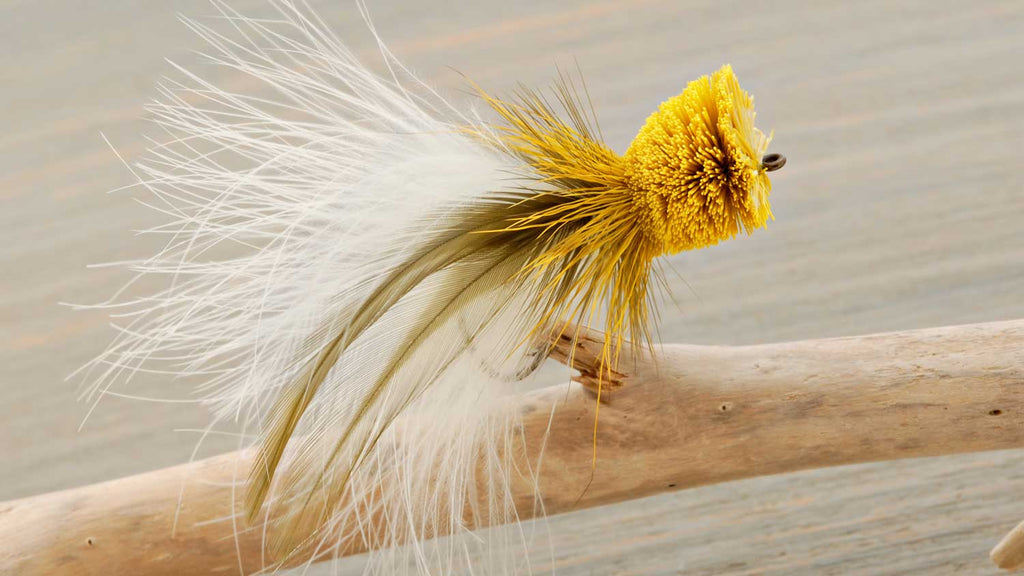
Each of these different fly fishing patterns employs various techniques, methods, and equipment. While this article focuses on streamer fishing, specifically sculpin fishing, any well-rounded fly fishermen will take the time to learn about all the different methods, try them out and see which one works best. Learning all the different patterns and techniques will help you become better and better at the sport.
There are many "pros" to streamer fishing and sculpin fishing in general, so many fly fishermen prefer the method. These include the fact that you can use much longer lines, heavier fly patterns, and you are pretty much guaranteed to attract big trout. The complex and intricate tying of streamers allows for more control over the casting process and enables the fisherman to play around a little with casting.
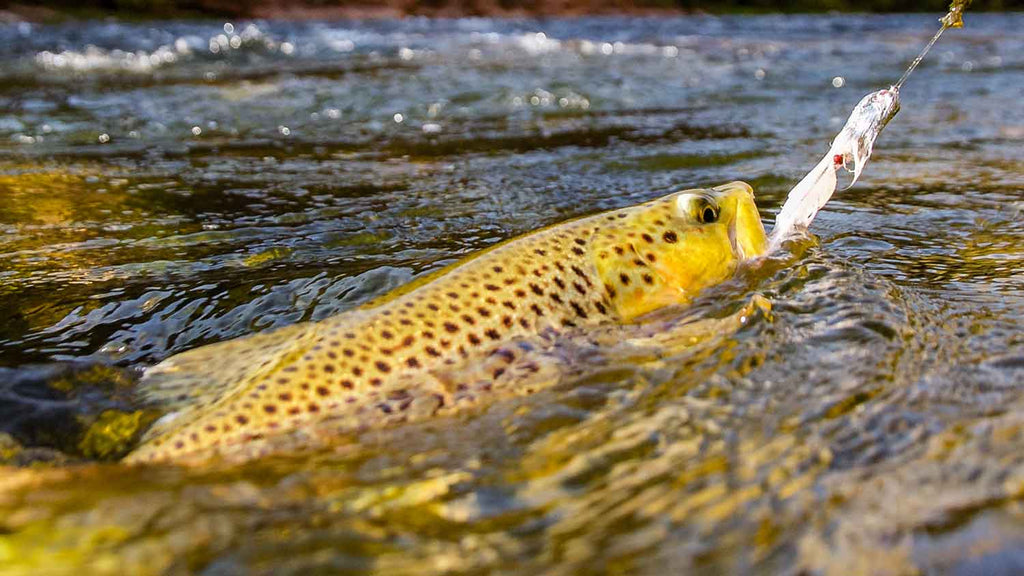
There are downsides to using the streamer method, too, of course. Some fishermen don't enjoy the weighted aspect of fishing with a streamer, preferring to let all the weight lie in the fly or dropper. Streamer fishing and sculpin fishing, in particular, also require more foresight into casting methods and requires a level of intuition and effort that some fishermen don't enjoy.
If you do want to try fishing with a heavy streamer, there are techniques you can follow to get results fast. First, throw previous misconceptions out the window. Fly fishing with a heavy streamer requires thinking outside the box, so the standard rules don't apply. Usually, with casting, you want to focus on tight loops and high line speed, but this can be counterproductive with a heavier steamer.
The bounce-back can cause the line to bounce, which adds slack to the line and makes it easier to form knots or drop your fly; it can also cause you to lose accuracy and speed. When casting for heavier streams, you want to slow things down, widen your loops, and try to avoid any sudden changes in direction. Consistency is key. If you follow this method, you'll avoid any sudden drops with bounce-back that will cause your line to slack or develop knots.
One popular technique for fly fishing with a heavy streamer is called the Belgian Cast, sometimes known as the Oval Cast. This is an easy technique - make a sidearm backcast, then a forward cast over the top. Make sure it has an extensive loop. When viewed from above, the shape should look like an oval. When using this technique, remember that speed isn't so important; what's important is keeping the line always in a state of movement.
The truth is, there's no right or wrong pattern or method to fly fishing. Whether you prefer steamer to nymphs or dry flys is a personal choice and up to your preferences and success rate. For those who do enjoy streamer fly fishing, it's a very rewarding way to fly fish and with a little practice, is guaranteed to catch a whole bunch of trout.
Safety When Fly Fishing Sculpin Patterns
As with any fly fishing experience, it's essential to pay attention to your surroundings and follow proper safety protocol. Even the most avid fishermen who have spent a lifetime on the water can get into dicey circumstances if they aren't paying attention.
Wearing proper safety gear when out on the water - sunglasses, wading boots, a life vest, and sunscreen, among others - is very important. Always keep a good eye on your surroundings, and if fishing alone, let someone know where you are. If you have room in your tackle box, a first aid kit is a great idea. As is always carrying your ID with you.
Don't try to fish in risky or dangerous areas, especially when alone. Look out for hazardous and venomous/poisonous plants and animals and take all proper precautions. These are general rules of thumb that will keep you safe and able to fish another day.
All fifty states require a license to fish, so if you don't already have one, check with your local relevant government branches such as the parks and recreation department or local agent.
Make sure any area you're fishing in is open to the public. You may need to pay a fee for the area's use unless it's part of a park. If fishing in a State Park, follow all guidelines and laws.
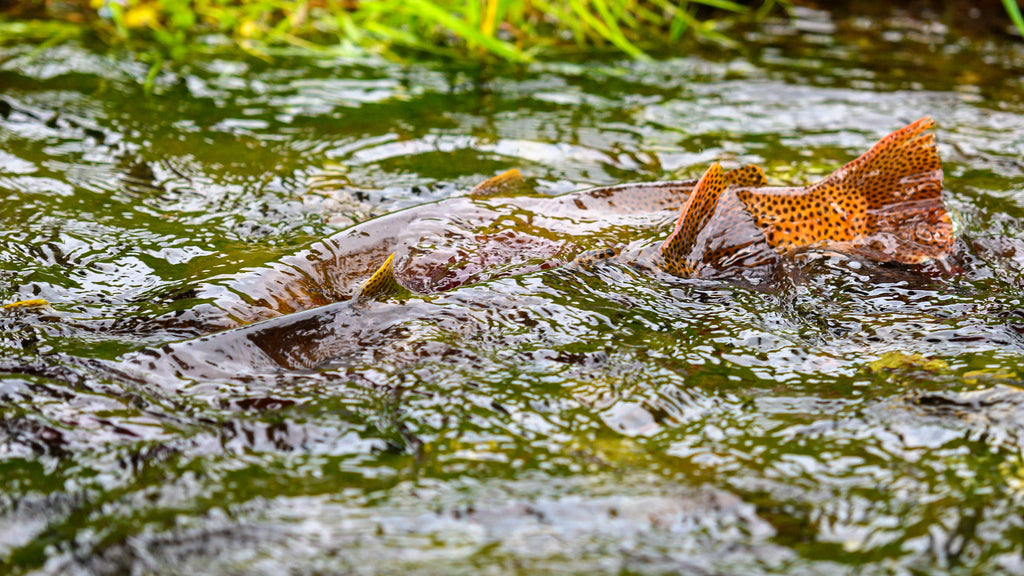
Final Thoughts When Fly Fishing Sculpin Patterns
Just as with any fishing, especially fly fishing, there's a learning curve. Streamer fishing with a sculpin is a great way to catch some magnificent trout, but you've got to take the time to perfect your technique. You can follow all the guidelines for casting, tying, and so on to a tee, but nothing beats actual on-the-water experience. This matters more than all the streamers you buy and all the online tutorials and videos you go through.
Fly Fishing in America is a huge, beloved pastime, and for a good reason. It's definitely about more than just the fish. Studies show that fishing is a beautiful way to alleviate anxiety and stress, by being outdoors with the sun and fresh air, spending time concentrating on a low-stakes task that requires patience and deeper concentration and immersing yourself in a beautiful, natural landscape.
Studies show that fly fishing significantly promotes a love of conservation and the environment (most fly fishers are passionate about being eco-friendly and animal-friendly and are incredibly passionate about the locations in which they fish), strengthens bonds among family and friends (often fly fishing is done with loved ones and fellow enthusiasts), promotes exercise and fitness (it's more hands-on and athletic than you might think!), and supports mental health because of it's relaxing and stress-alleviating properties.
Concentrating on the art of casting your line correctly, and using your inner-knowledge and gut instinct to locate fish are all things that flex your brain, engage your mind through problem-solving, and keep you at your fittest, mentally and physically. It is a wonderful pastime that can be done alone or with loved ones and has proven benefits to physical and mental health.
Fly fishing is a rewarding and fun sport that is all about patience, intricate tying, and intuition. Avid fly fishermen understand trout (and their prey) on a deeper level; that knowledge and understanding are why they're able to achieve some fantastic catches.
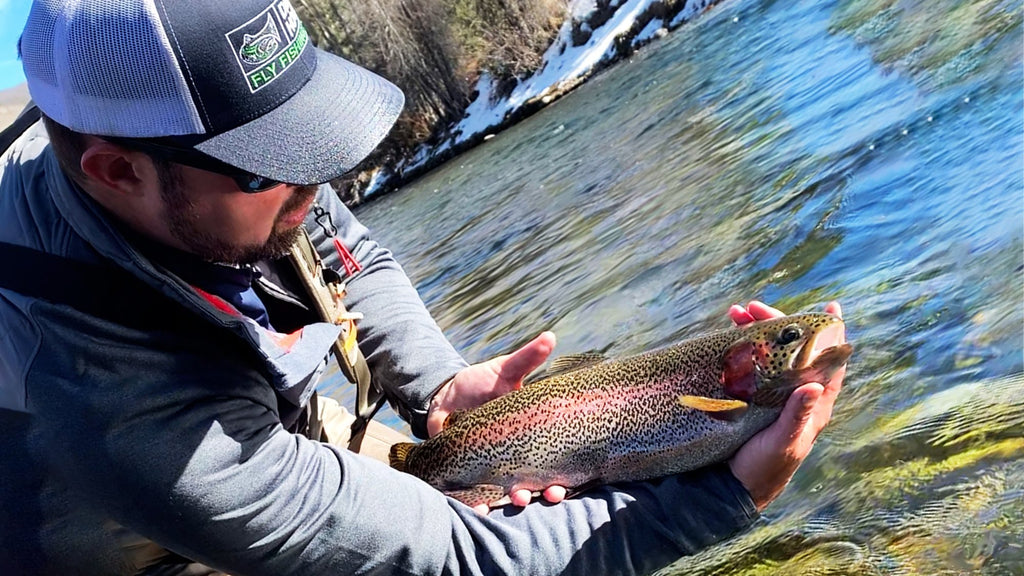
About the Author
Matthew Bernhardt, a third-generation Coloradan, grew up at the forefront of the state’s fly-fishing revolution, enjoying time on the water, side by side with experienced guides and lifelong anglers.
By combining his passion for fly-fishing with input from other experienced fly-fishers and guides and his fine arts degree from Colorado State University, Matthew spent five years carefully developing the Drifthook Fly Fishing System, built to help every angler catch more trout.
When he’s not spending time with his wonderful family, you’ll find him out on the water catching MONSTER trout, and he anxiously looks forward to the day when his kids are old enough to join him there.


